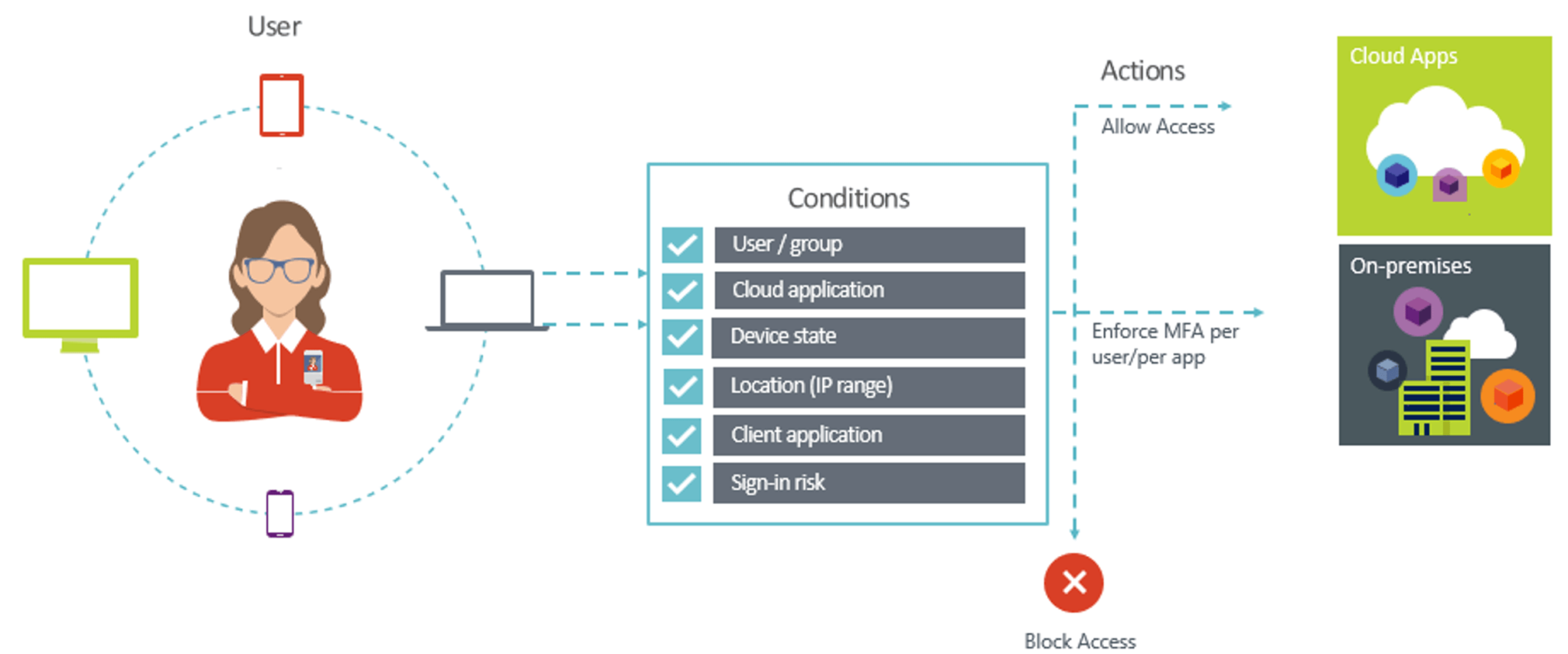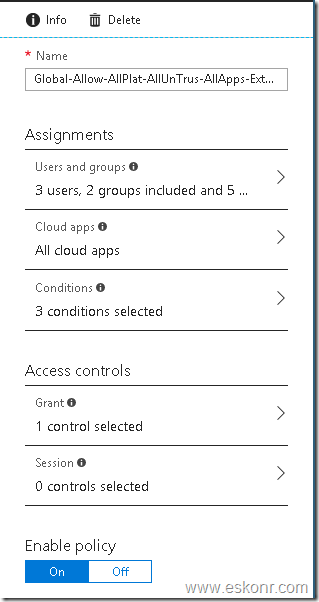


Under access control select grant and select the check box for require multifactor authentication. A list of Cloud applications will be presented and pick Microsoft Azure Management. Under Cloud apps, select the select apps radio button.

Under users and groups, select users and groups radio button. When the new blade appears we will provide a name of our policy. Back in Azure Active Directory we will scroll down to conditional access, where we will select new policy. Let's head back to the Azure portal and configure conditional access for multifactor authentication. With conditional access, we can enforce the use of multifactor authentication to Cloud-based applications like the Azure portal when not accessing it from the corporate network. This Cloud application, you must use multifactor authentication. Conditional access policy does not grant access to the application, but sets conditions on how to access the application. The, then do this, is the response of the policy. There are other optional conditions that you can apply to a policy. That's who tried to access what.Īnd the Cloud-based application, that's the what, which application was accessed. The two mandatory conditions are the user. The, when this happens, is what triggers the conditional access policy. Conditional Access policy works with the principle of, when this happens, then do this. Those conditions represent a conditional access policy which is integrated with your set of access controls. To see more Microsoft Azurecontent, visit our Azure Training Library.Īzure Active Directory Conditional Access enables you to enforce controls on access to Cloud-based applications based on a set of defined conditions. General knowledge of Azure Active Directory.People preparing for Microsoft’s AZ-303 exam.



 0 kommentar(er)
0 kommentar(er)
